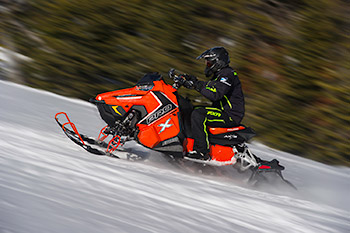We’ve been speculating about the next generation of 800 2-strokes to hit the market.
While this is being written, we think both Cat and Ski-Doo are working on fresh 800 powerplants but we’re not sure whether these new engines will be available for next season.
Of course, it’s all been motivated by Polaris’ 800HO that seems to have set the bar higher for performance in this very popular engine segment. Some of our readers seem to be growing impatient, wanting more power and even holding off buying a new sled because of the prospect of something newer and faster arriving on the horizon.
We’re gambling that any new Ski-Doo technology we see will likely show up in a 600 before it does on an 800. Why? Simply, although never a cakewalk, it’s easier to EPA certify a 600 than an 800 and it gives Doo time to perfect new E-TEC technology.
Likewise, Cat has been on the threshold of introducing a new 800 for a couple of years now, ever since the intro of its amazing slot-injected 600.
So, is it possible to build an 800 with more power and get the EPA to buy in? To put this in perspective, you have to go back in time to the 1950s. In 1955 Chevrolet introduced a 265 cubic inch V8 that made 163-hp. That engine was heralded as an icon of performance efficiency and laid the groundwork for nearly 50 years of production in various forms.
Today’s 800s are making 163-hp from only 48 cubic inches. That’s a lot of efficiency and in order to get the kind of horsepower snowmobilers are demanding (we think the next generation of 800 2-strokes will be making power in the 168-70 range) there’s a lot of stress on a parallel twin this size and it definitely requires a steady diet of gasoline to both cool the engine and generate big power.
The only way to certify a big power 2-stroke is to ensure it runs super-lean all the time and uses an absolute minimum amount of gasoline and minimum quantities of oil to lubricate its internals. All the above means more heat and a real threat to the engine’s durability.
It’s a bit like a dog chasing its own tail. Consumers are demanding more power; the EPA wants better mileage and a cleaner burn. From an engineering perspective, those two things are in direct conflict with one another.
The 800 class requires the optimum from a 2-stroke, unlike the 600 class that offers less power output (125-hp) from about 37 cubic inches of displacement.
The fact the 600 class buyer doesn’t demand the kind of hyper-performance the 800 class does means 600s can run cooler, are easier to keep within EPA boundaries and generally have better prospects of living a longer life.



